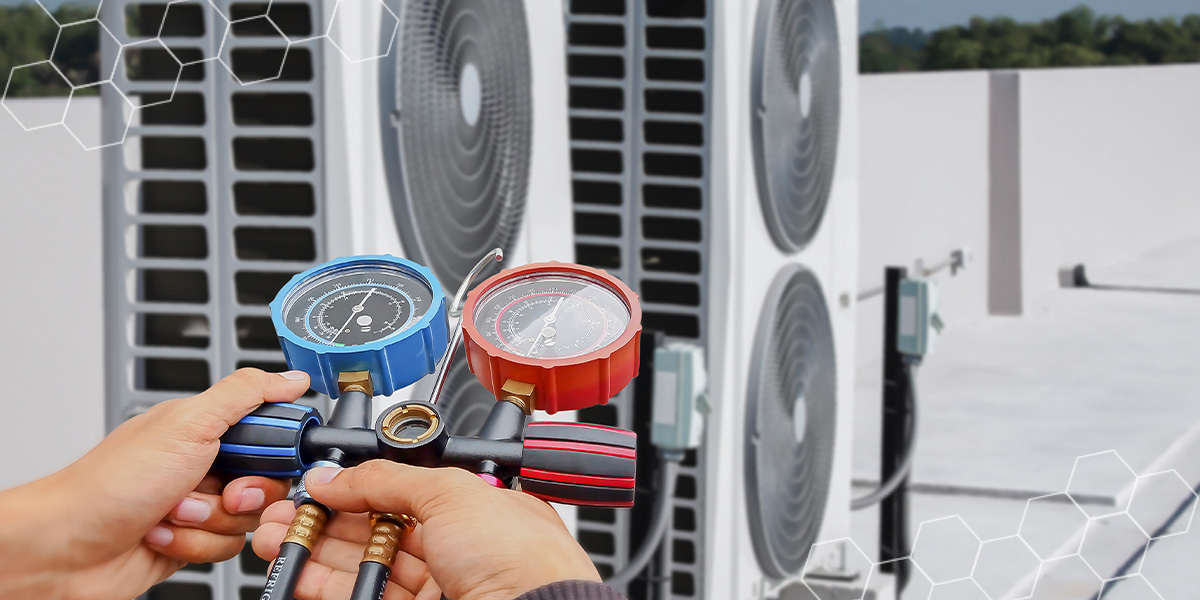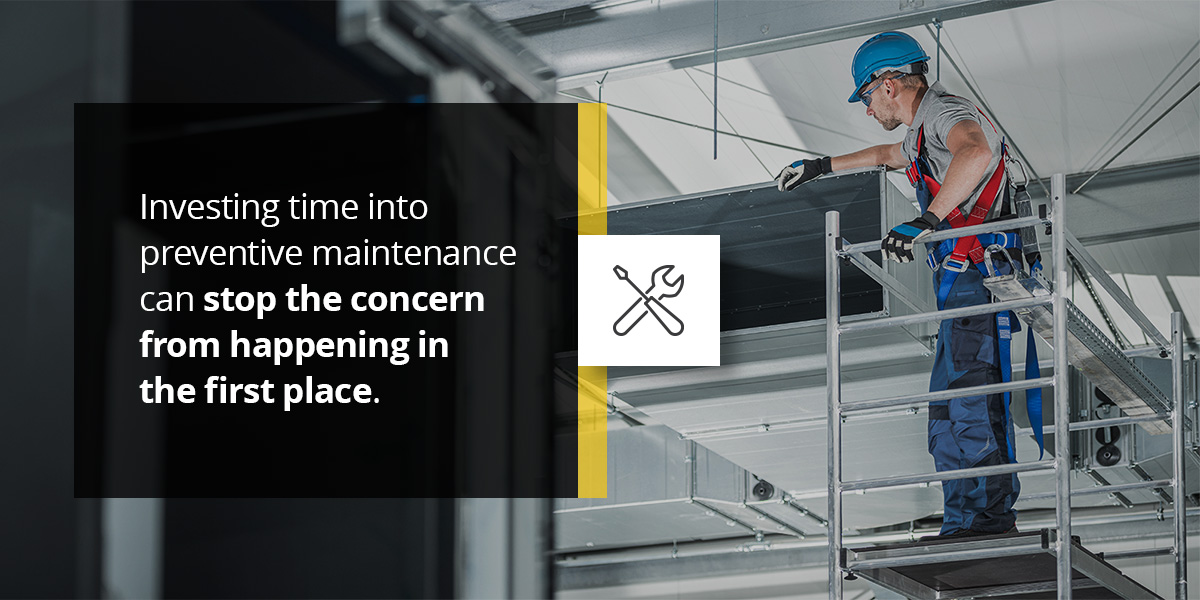

Temperature extremes in commercial spaces often have a detrimental impact on workers’ physical and mental health, leading to lower productivity. If the environment is too hot or cold, it’s difficult to focus on the task at hand. As a result, prioritizing a comfortable work environment is important to facilitate better efficiency and worker health.
Understanding common heating, ventilation, and air conditioning (HVAC) issues can help you troubleshoot them and sustain a more comfortable indoor temperature for your employees.
As air conditioning and heating solutions age, they may become less effective in heating or cooling a commercial building, often due to:
Strange noises from your HVAC system are often a cause for concern. Here are some unusual sounds to listen for and what they indicate:
When you activate your thermostat, you expect your cooling or heating system to turn off or on. If the system is unresponsive, you may be encountering one of the following issues:
Aside from heating or cooling the air, HVAC systems need to circulate the air around the room. Irregular cold or warm spots in a commercial space mean the system is not working effectively. Some reasons behind this include:
Heating and cooling systems go through cycles of operation. In other words, once the system has achieved the desired temperature in the room, it will go into resting mode. When the air temperature fluctuates, the system commences operation once again.
One of the most common HVAC problems is when your system goes between these stages too quickly, otherwise called rapid cycling. Clogged air filters or low refrigerant levels are common reasons behind rapid cycling. In addition, the position of your thermostat could be at fault. As the thermostat is responsible for reading the temperature in the room, technicians must take care to position it in an area that will produce accurate readings.

While having a good understanding of common HVAC issues can assist you in troubleshooting HVAC problems effectively, investing time into preventive maintenance can stop the concern from happening in the first place. Here are some tips to optimize your maintenance schedule:
If your commercial building relies on the effective performance of a heating or cooling system, you may have further questions about how to keep it in great condition. Here are some FAQs to consider:
An HVAC emergency is anything that impacts the health and safety of your workforce. For example, some heating solutions may leak carbon monoxide — an odorless and colorless gas — which is toxic to humans. Any HVAC system issue that could impact the safety of your workplace can be considered an emergency.
Strange odors, unexplained sounds, or inefficient temperature control are signs that your HVAC system is malfunctioning. Specifically, one of the most obvious signs of a faulty system is an uncommonly high energy bill.
HVAC systems experiencing problems will often use more power to achieve the desired output. If you’re paying more for your energy than expected, consider scheduling a professional service — it may save you money in the long run.
Heating and cooling solutions generally last between 15 and 20 years, though they can last longer with diligent maintenance and upkeep. As they become older, they may experience more problems, making it worthwhile to replace the unit.
If it’s time to upgrade your HVAC system, you may want to consider renting a system to ensure your workers can continue working in comfort while it’s being replaced.
HVAC systems are vital for commercial spaces, creating a comfortable, safe working environment. However, these systems may encounter occasional problems, leading to costly downtime.
Thompson Power Systems offers a range of temperature control systems for rent, allowing you to continue your operations while your current system undergoes maintenance. Whether you need a system for a day or a month, we’re happy to set up a rental arrangement that works for you.
We’re proud to be your local power systems service provider in Alabama and Northwest Florida. Contact our professional team today for more information.